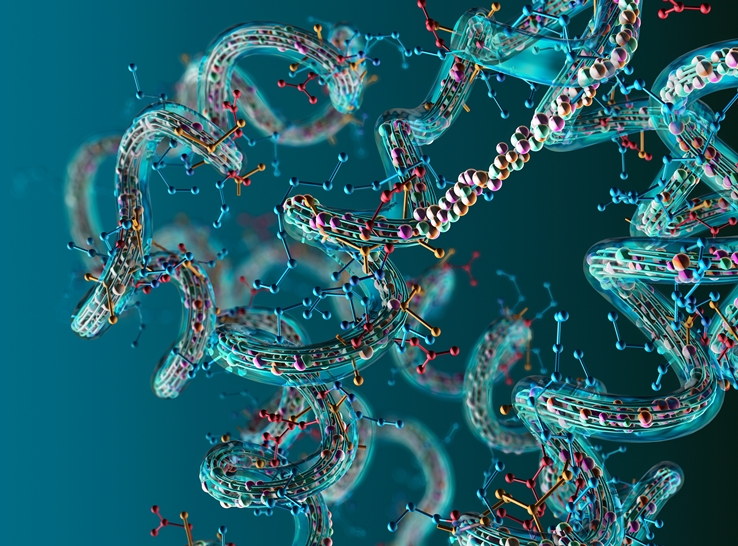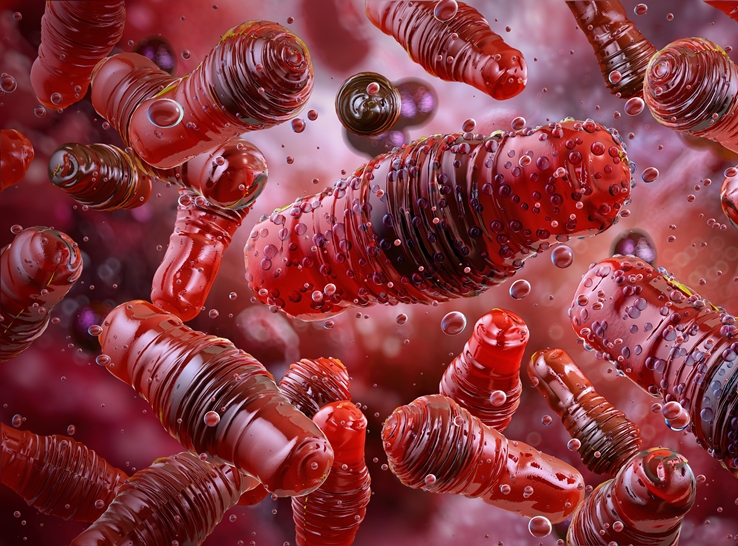Poultry farms that improve Eimeria control can significantly reduce coccidiosis and related issues such as necrotic enteritis and salmonellosis.
Interestingly, research shows a strong inter-relationship between Eimeria, which causes coccidiosis, and the formation and exacerbation of bacteria associated with these additional disease challenges.
Matthew Jones, DVM, PhD, Southern Poultry Research Group, presented in-depth information on coccidiosis at the 2024 Poultry Science Association annual meeting.
“Coccidia by itself is a substantial concern to the poultry industry,” Jones said. “But when secondary impacts are considered, the true depth of consequences resulting from Eimeria infections can be appreciated.”
Eimeria infection is associated with a rise in bacterial proliferation that can further undermine bird health and performance — including an increase in late mortality — and make it more difficult to manage bacterial loads relevant to food safety.
“We’re finding that it’s really important, in addition to thinking of Eimeria as a primary pathogen, to consider the interactions it has with bacteria as well,” Jones said.
“Improved understanding of these interactions, among poultry veterinarians and producers, can lead to more optimized control strategies and improved economics of poultry production.”
Compromising intestinal integrity
He cited general industry knowledge that is increasingly recognizing the broader than previously understood significance of Eimeria infection.
During the Eimeria life cycle, the later asexual phases of reproduction damage the intestinal epithelium, Jones explained. This disruption can also be measured through changes in intestinal morphology, expression of tight-junction proteins and fluorescein isothiocyanate-dextran analysis, which measures intestinal permeability.
“The intestinal epithelium is an essential physical and immunological barrier protecting the birds from pathogens in the lumen of the intestine. Eimeria species erode this barrier and allow the opportunity for pathogenic bacteria, and potentially commensal bacteria, to come through and locally or systemically invade the host.”
Inducing necrotic enteritis
Necrotic enteritis is the most documented secondary infection in the US broiler industry associated with a primary Eimeria infection. Mycotoxins, small-grain diets (non-starch polysaccharides), high-protein diets, management changes and other stressors can increase the risk of this disease in broilers.
In addition, research shows many coccidia species can induce necrotic enteritis, Jones said. The intestinal disruption caused by Eimeria allows pathogenic Clostridium perfringens to infect the host and release toxins that cause systemic toxemia and necrosis of the intestinal epithelium.
Research also reports that the combination of Eimeria and C. perfringens poses a formidable challenge, Jones said. “Although the clinical impact of these two pathogens can be striking, the depression in performance in birds that do not succumb to the disease may be of greater economic and welfare impact due to the number of individuals affected.”
Some species, such as Eimeria maxima, pose a greater risk than others, he noted. “E. maxima, specifically, is one of the most frequent causes of intestinal damage resulting in necrotic enteritis.”
Researching necrotic enteritis risk
Jones highlighted key studies that illustrate the challenge.
- Eimeria and C. perfringens combination effect. In a pair of experiments by JF Nicholds et al, six Eimeria species were evaluated in the presence and absence of C. perfringens. “They found that E. maxima and E. brunetti, when combined with Clostridium, tended to cause a higher level of clinical necrotic enteritis than other Eimeria species,” Jones said. Notably, E. tenella did not create any clinical necrotic enteritis when interacting with C. perfringens.
- E. maxima as the standout. Other studies at Southern Poultry Research Group, led by Chuck Hofacre, DVM, PhD, and Greg Mathis, PhD, have demonstrated that E. maxima usually creates more clinical necrotic enteritis alone than when combined with other Eimeria species, like E. acervulina.
- Eimeria foundational to necrotic enteritis. Additional studies have shown Eimeria infection as critical to the incidence of necrotic enteritis. “The findings highlight that challenges not receiving Eimeria typically do not achieve clinical necrotic enteritis. Clostridial isolates in a research setting appear to require the Eimeria to recreate the disease from a clinical standpoint.”
More infections
In addition to the influence on necrotic enteritis, Eimeria’s physical and physiological breach of the intestine may allow other organisms to infect the host.
Escherichia coli, Staphylococcus aureus and Enterococcus species are intestinal commensal bacteria that translocate to different internal tissues, Jones said. The presence of these bacteria has been well-documented in disease conditions such as bacterial chondronecrosis with osteomyelitis and kinky back.
Food-safety concern
Along with impacts on bird health, there are also implications for Eimeria infection on food safety, Jones said. A leading example is the influence of Eimeria infection on salmonellosis.
E. tenella infects the distal intestine and has been correlated with increased enumeration of Salmonella in intestinal samples and internal organs, he observed. Conversely, low levels of E. tenella have been associated with lower Salmonella colonization.
“The better we can control more Eimeria and reduce Eimeria infection, the more we can reduce these secondary disease implications — not only to protect bird health and performance but also food safety.”





